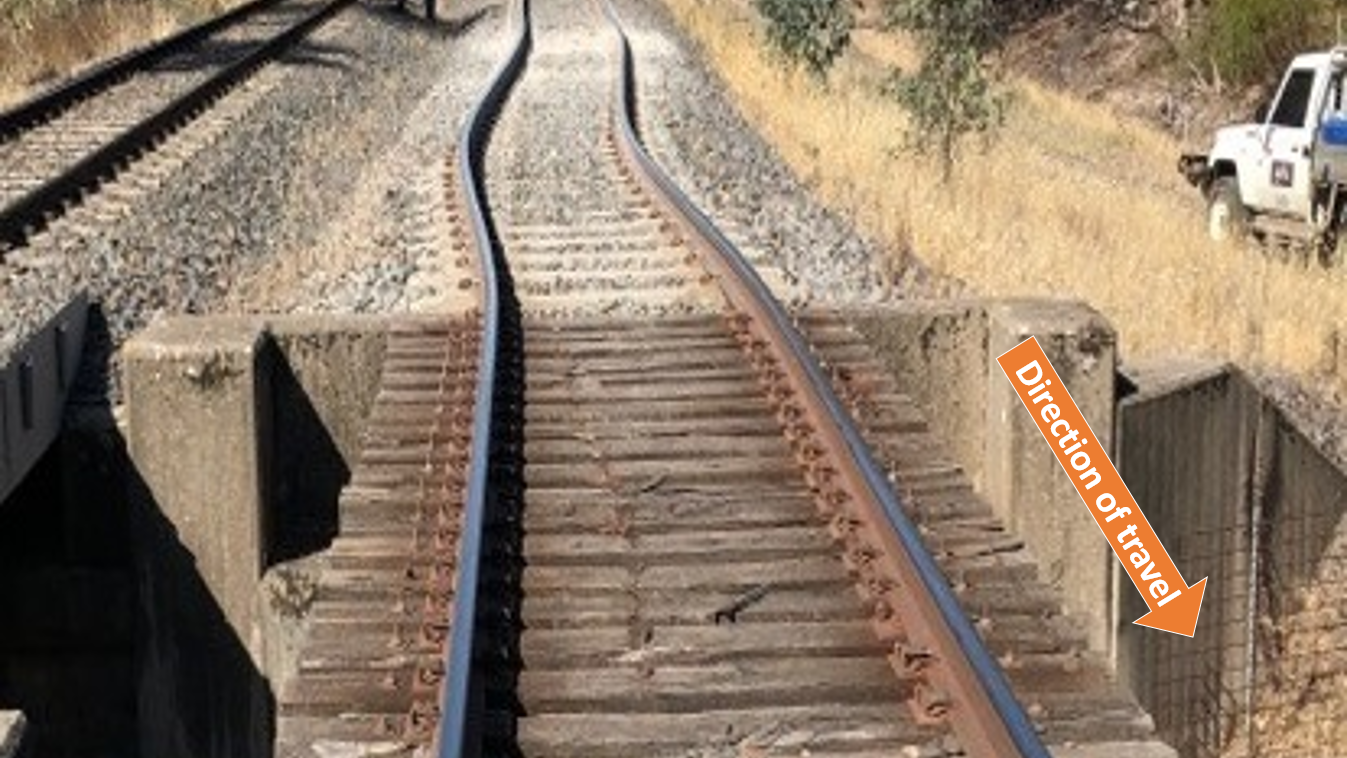
|
Key points:
|
A freight train wagon’s lead bogie derailed when passing over track that buckled and deformed under the train likely due to a loss of supporting ballast due to a mud hole and compressive forces within the rails due to hot weather, a new transport safety investigation report details.
On 21 January 2019, SCT Logistics freight train 6BM9, consisting of two locomotives and 31 wagons, was travelling south from a logistics terminal in Barnawartha, Victoria to Altona in Melbourne, with temperatures expected to reach 39°C.
At 1530, the train passed through Creighton travelling at about 100 km/h. About 500 metres after crossing Creighton Siding Road, the lead bogie of the third-last wagon derailed a short distance before a small rail bridge. The driver noticed a plume of dust towards the rear of the train in the rear view mirror, and observed a loss of brake pipe pressure.
The train was brought to a stop and network control notified. The crew then inspected the train and identified the derailed wagon. An immediate site inspection by maintenance personnel from the track manager, the Australian Rail Track Corporation (ARTC), found significant lateral misalignment of the track.
A transport safety investigation into the incident conducted by the office of Victoria’s Chief Investigator, Transport Safety, which undertakes rail safety investigations in Victoria on behalf of the ATSB, established that the wagon derailed at a section of track with a mud hole* and an associated loss of ballast, resulting in a reduction of track lateral resistance.
“The combination of reduced track lateral resistance from the mudhole and longitudinal compression within the rails due to the hot weather was sufficient for the track to misalign under the dynamic loading of the freight train, and for one wagon to derail,” said Chris McKeown, Chief Investigator, Transport Safety.
“In this case, the wagon derailment only resulted in minor track damage, however, had the wagon not derailed an XPT passenger service 80 minutes behind the freight train would have encountered the track misalignment and possibly derailed,” he said.
The mud hole had been identified and recorded in maintenance work orders for at least two years prior to the derailment, but no remedial work had been undertaken and it was not identified as a special location for the monitoring of track stability in ARTC’s Track Stability Management Plan, the investigation notes.
“The loss of ballast profile at the derailment location probably required a more significant level of response than being monitored, such as a temporary speed restriction or repair,” Mr McKeown said.
The longitudinal compressive forces were due to the hot conditions of that day, and possibly localised low stress-free-temperatures in the rails near the rail bridge, the investigation notes.
“In continuously welded rail, longitudinal compression forces occurs regularly during summer, as the rail expands longitudinally and it may buckle if there is inadequate track lateral resistance,” said Mr McKeown.
“In this instance, the rail bridge likely acted as a fixed point, with deformed track creating an ‘S’ buckle that went from the derailment site to the bridge.”
In response to the derailment, ARTC has reviewed its Track Stability Management Plan and included the affected section of track as a special location for the monitoring of track stability.
“This investigation highlights the importance of rail infrastructure managers having systems in place to identify track sections vulnerable to lateral instability during the summer period,” Mr McKeown said.
* Mud holes occur when ballast becomes contaminated (or fouled) with fine materials. This can be due to poor ballast, a breakdown of the ballast material or the formation (the track base) rising up through the ballast. The fouled ballast retains water (appears like mud), prevents effective drainage, and can result in poor track geometry.
Read the report: Derailment of freight train 6BM9, at Creighton, Victoria, on 21 January 2019


